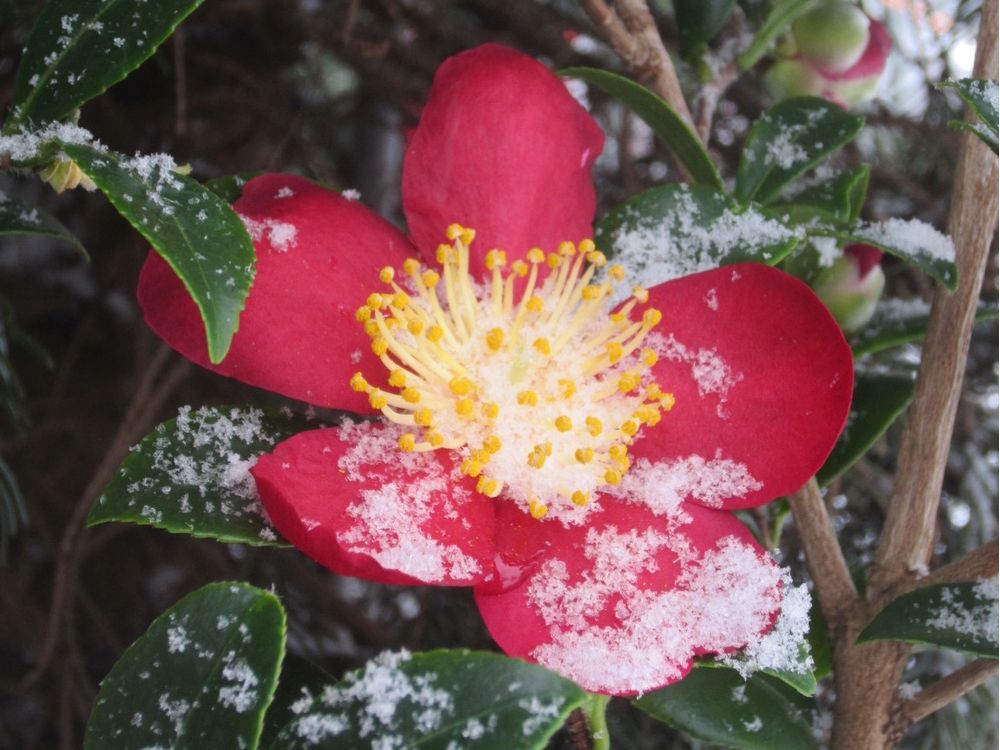Brian Minter: Don't overlook these camellias

Credit to Author: Aleesha Harris| Date: Thu, 14 Nov 2019 19:00:05 +0000
They are just coming into bloom now, and in slightly warmer climate zones, they will continue to flower all through the winter. Camellia sasanquas are the “other” camellias that few people ask for because they want the more impressive big double blossoms of the spring-blooming camellias (C. japonica). What a miss!
Native to both Japan and China, Camellia sasanqua species can be found growing high in the mountains above 900 metres altitude. Although cultivated in Japan from the late 1600s, it wasn’t until the mid-1800s that they were first introduced in England and then to Europe by Dutch traders in 1869.
Over their long history in Japan, C. sasanquas were not typically used as ornamentals, but rather as useful plants to make tea. Today, tea is generally made from another camellia species — Camellia sinensis — which has somewhat similar foliage.
Its elegant foliage, with its finely serrated margins, is similar, although slightly smaller, to its japonica cousins. The new leaves of many varieties have a shiny, coppery tone, and I love the glossy nature of all camellia leaves because they pick up and reflect the light, making this plant attractive year-round.
They produce smaller, mostly single pink or white flowers that bloom in sequence over a five to six-month period. This is a wonderful quality because, although winter cold spells can freeze the open blossoms, hundreds of new buds are waiting to open once the weather warms up.
Sasanquas are quite a sight, even without flowers. When the blossoms finish, they often leave behind round green seed pods. For centuries in Japan, these pods were processed to make tea seed oil, a valuable and versatile commodity used by the cosmetic industry, as an oil for lamps and as a lubricant. It was also important in the food industry because it has a much higher caloric content than any other edible oil. It is still sold today in Japan.
Botanically, C. sasanqua is now listed as C. hiemalis, a classification that includes varieties that are among the longest blooming and have more heavily textured flowers. It’s important to note that, with this new classification, other camellia species, like C. granthamiana, bloom in winter as well.
Sasanquas are no miniatures, often growing five metres tall and wide. As a shrub, sasanquas look very appealing in the landscape. Many varieties have a more open and somewhat pendulous habit, making them ideal as espalier specimens up against fences or walls. Some of the more compact forms can be used as foundation plantings. Sasanquas, planted as hedges, are often seen in Japan and Europe. Just imagine how spectacular they would look flowering sporadically all through our dreary winter months. The nature of this plant also lends itself to growing on a trellis and makes a stunning screen, something that is especially welcome in today’s areas of high density living.
As for hardiness, even though they are a little more tender than the C. japonicas, in protected locations, sasanquas do very well. In the eastern part of the Fraser Valley, they should be planted where they will be sheltered from the cold outflow winter winds. I have found that over time they, like bay laurels (Laurus nobilis), become far more resilient to winter cold.
In containers they are also magnificent, but they must be situated in protected areas. At this time of year, as we go into fall and winter, you should consider a containerized plant only if you live in a warmer climatic zone. Otherwise it would be better to wait until spring.
I find C. sasanquas are far more versatile than C. japonicas. They will tolerate more sun than is often expected. Their perfect location is a spot with morning sun and afternoon shade. In full shade, they become leggier and don’t set as many buds. If planted up against a south or west wall in the full, hot summer sun with no protection, the foliage can burn, and there will be a general yellowing of the leaves.
As with all camellias, good drainage is absolutely essential. They love open, porous soil with good texture or at least some fine fir or hemlock bark mulch used in the planting hole. Because they are very shallow rooting, they also appreciate a two-inch layer of bark mulch on top to protect their roots both in winter and summer.
Sasanquas are easy to prune, but pruning should be done only after their flowering period is finished and before the bud set begins. This is true for all species of camellias.
Now is the time of year to find winter-blooming camellias in garden stores. It is nice to see the actual blooms of each variety before making a selection. Many sasanquas have a light perfume, so check for that as you consider the various varieties. Scented camellias make ideal cut bouquets to bring inside and enjoy over the holiday season or even during the darkest, coldest days of January.
As an added bonus, last week I was thrilled to see a couple of Anna’s hummingbirds enjoying the nectar of open sasanqua blossoms. That alone is a good reason to plant one … or more!